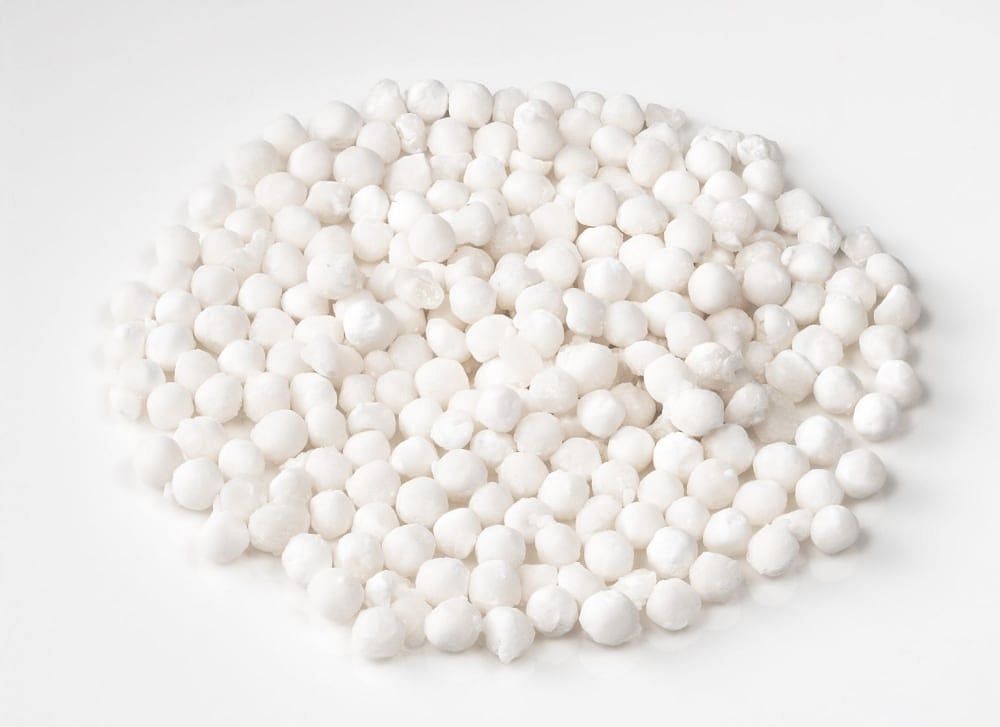Indian households are familiar with sabudana or tapioca pearl, a favourite breakfast and evening snack. Be it in the form of sabudana khichdi or kheer, it offers a whole range of health benefits.
Let’s discuss them in detail and answer some of the common questions about them.
What is Sabudana?
Although sabudana is used for fasting, a larger population is still unaware of what sabudana is and how sabudana is made.
Sabudana, also known as sago, is starch and contains carbohydrates. It is collected from the spongy centre of tropical palm trees. The tapioca plant's root is used to extract the starch; then, the starch is transformed into small, pearl-like spheres. This is how sabudana is made.
Sabudana Nutrition
- 544 calories
- 135 g carbohydrates
- 30.4 mg calcium
Nutritional value of sabudana increases due to its content of:
- Iron - 2.4 mg
- Magnesium - 1.52 mg
- Potassium - 16.7 mg
- Fibre - 1.37 g
- Protein - 0.29 g
- Fat - 0.03 g
Benefits of Sabudana
1) Energy source
Sabudana is high in starches and simple sugars, which quickly produce glucose for the energy demands. A dry fruit kheer of sabudana with milk benefits during fasting.
2) Gluten-free diet
A considerable proportion of young adults and older people acquire intolerance to gluten proteins. Because of the gluten-free benefits of sabudana, it can be a better substitute for wheat.
3) Regulates blood pressure
Sabudana is high in potassium content. It can aid in maintaining good blood flow and regulate your blood pressure.
4) Improves digestion
Dietary fibre, one of the sabudana nutritional constituents, promotes digestive health, and relieves indigestion.
5) Helps in weight gain
Sabudana is high in carbs but low in fat, making it a better food option for weight gain. Hence sabudana for weight loss is not helpful.
6) To fill the iron deficiency in anaemia
Sabudana is an iron powerhouse that is a blessing to those who suffer from iron deficiency.
7) Boosts nervous system
Due to high levels of the amino acid tryptophan, eating sabudana helps to improve nerve impulse transmission.
8) Enhances mental health
Sabudana aids in the treatment of anxiety and insomnia by maintaining good moods and supporting sound sleep.
9) Reduce the risk of heart disease
The high levels of dietary fibre and vitamins B in sago seeds aid in maintaining healthy HDL levels.
Benefits of Sabudana for Skin
Very few are aware of the benefits of sabudana for the skin.
- Soaked, mashed paste increases the external look by renewing skin. The amino acids and antioxidants in sabudana give flawless skin.
- Face pack of sabudana with milk benefits by tightening, protecting, and rejuvenating your skin.
- Sabudana comprises antioxidants that conceal fine lines and wrinkles. It also boosts collagen and maintains smooth skin.
- Other benefits of sabudana for skin are its qualities that help in decreasing pimples and lightening dark spots.
Sabudana Benefits in Pregnancy
Various dishes prepared from sabudana benefit females in pregnancy. Sago seeds can be part of the diet in pregnant women due to the nutritional value of sabudana. Sabudana benefits in pregnancy by ensuring the healthy development of the child in the womb.
Sabudana is great for stimulating milk production and balancing hormonal processes in pregnant women due to its high iron and calcium content. Vitamin B6 and folate in sabudana can aid in the development and growth of the foetus. It also protects newborns from neural tube abnormalities.
Sabudana Benefits for Female
1) Strengthens bones
Calcium in sabudana benefits in pregnancy. It also helps relieve osteoporosis by restoring ideal bone density during menopause.
2) For skin
Sabudana benefits females due to its antioxidants and amino acids that give healthy skin.
3) Prevents hair fall
A sabudana hair mask with coconut oil prevents premature greying and balding by controlling hair loss.
4) Anti-dandruff treatment
When applied as a herbal paste to a dandruff-prone scalp, sabudana promotes scalp health by antifungal and antibacterial properties. It heals damaged scalp while also providing relief from dandruff.
Benefits of sabudana for diabetics
The benefits of sabudana for diabetics is more when it is consumed in moderate quantities.
1) Improves digestion
The dietary fibre present in sabudana promotes digestive health.
2) Relieves constipation
The fibres in sabudana help in the relief of symptoms such as bloating, constipation, and indigestion.
3) Maintains a healthy blood sugar level
The benefits of sabudana for diabetics is due to phytates, tannins, and polyphenols, which are plant compounds that impede digestion. This helps people with diabetes mellitus lower their blood sugar levels.
Also Read: Karela Juice: Benefits, Side Effects & How to Make It
How Is Sabudana Made
The making of sabudana is a 12 step long process starting from the harvesting stage and ending at the packaging stage.
Let’s take a look at these -
Step 1
The first step in the production of sabudana is to harvest cassava roots. A variety of plants can be harvested at any time between six and nine months. There are four to eight cassava roots in a single cassava plant.
The roots of the plant are usually eight to fifteen inches long and one to four inches wide. While separating roots, it must be taken care not to damage them.
Step 2
To move to the next stage, the roots are sent to the factories for further processing. Cassava protection from a number of farms is collected in bulk for further processing.
Step 3
Sorghum roots are cleaned and peeled in this step, which is carried out using large conveyor belt machines. It is an essential step in the production of sorghum.
Step 4
During the process, the peeled roots are brought to a laboratory to extract the starch. Automated machines are used for crushing the roots, which allow for the separation of the scratch extract, a white milk-like liquid.
Step 5
The liquid is moved through several filters during this step, which helps to remove all impurities. After the filters, the liquid is transferred to the water treatment process.
The liquid is then transferred to an accumulation tank after it has gone through many stages of filtration and purification.
Step 6
An important step is the storing of the milk-like liquid for six to eight hours. This storing period helps to remove the impurities from the liquid. The impurities naturally rise and float on the water. This helps in removing the impurities.
Step 7
Once the liquid has been drained, only the solid remains. The solid remains are useful for the production of sabudana. The solid substance is then allowed to dry. To enable the further process to take place, the white solid substance needs to be dried out.
Step 8
Afterwards, the dried substance is transferred to the sieving section, where the different particles can be separated. After the particles have been separated, this is where the actual production of sabudana granules takes place. But the process is not complete here yet because the granules need more further processing.
Step 9
Then, the granules are transferred to a steaming or cooking process. The sago or sabudana granules gain some moisture during this process, which adds another step to the production process.
Step 10
This process is useful in removing the excess moisture from the sago granules. In the process, the sago granules are dried in the sun or through mechanical driers. In this step, the factory’s actual production process is completed, and the sabudana granules or the sago pearls are ready.
Step 11
This process involves sending the sago through a polishing machine where it is given the shiny white colour you see when you buy sabudana from the market.
Step 12
After the sabudana is produced and polished, it is packed in jute bags and transferred to wholesalers and retailers for further distribution.
A factory makes sabudana from the starch extracted from the cassava plant. This is how the sabudana is made.
Sabudana Disadvantage
- Sabudana disadvantage is observed in diabetic people because it has a high carbohydrate content.
- Regular use of sabudana is not recommended for those on a weight-loss regimen because it is high in calories.
- Too much sabudana can cause digestive problems like bloating and constipation.
- Consuming sabudana in excess can lower blood pressure in people with heart disease. This is another sabudana disadvantage.
Summing Up on Benefits of Sabudana
Sabudana is a starch that’s commonly included in our diets in the form of sabudana khichdi or kheer.
In addition to providing a boost in energy, it reduces the risk of heart disease and can help with diabetes. However, it is also high in calories and carbs, so it is not the best choice for weight loss.
If you eat sabudana, do so in moderation and make sure to burn excess calories by increasing your activity level.
Faqs
1) Is Sabudana a Junk Food?
No, Sabudana has good carbs, something which Junk food doesn’t have. So, it’s not junk food, but you should limit your daily intake of sabudana as it may promote weight gain.
2) Can We Eat Sabudana Daily?
Although Sabudana provides energy and other health benefits, it also contains a high amount of calories and carbohydrates, making it not a suitable weight loss supplement. Whenever you eat sabudana, be sure to eat it in moderation and be sure to increase your physical activity to burn off any excess calories.
3) Is Sabudana Made of Rice?
No, Sabudana is not made from rice. Instead, it is made from sago. The starch in Sago is derived from the pithy centre of tropical palms, especially those of the Metroxylon family.
4) Is Sabudana Made of Maida?
No. Sabudana does not come from maida or wheat flour, as many believe. It does not use wheat or its byproducts. Instead, it is made with sago.





